Countering Downward Bias in Inflation
GIC and Banco de México
February 27, 2020
Mexico City, Mexico
Charles L. Evans
President and CEO
Federal Reserve Bank of Chicago
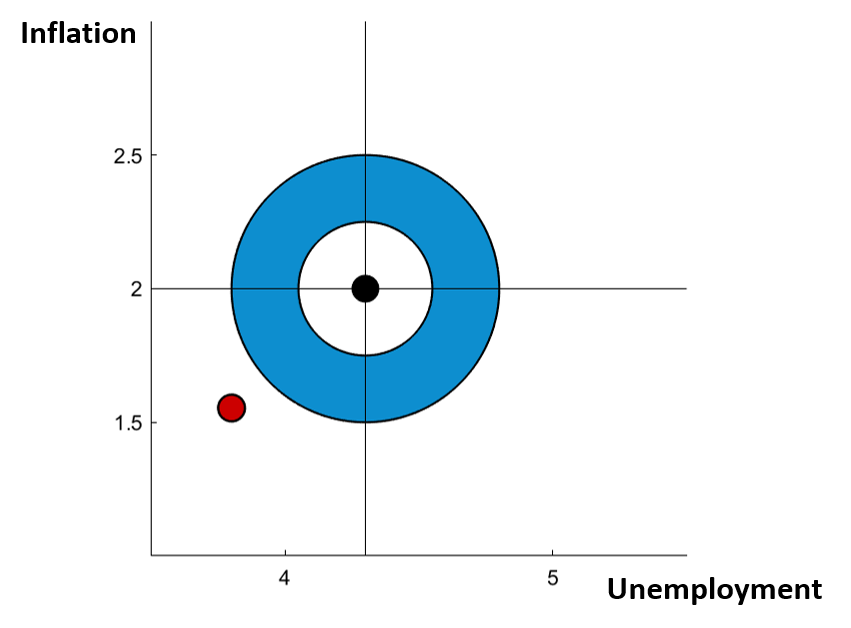
Key Messages
- Effective Lower Bound (ELB) risk leads to downward bias in inflation
- When ELB drives down π < π* for an extended period, need to follow with some period of π > π* in order to establish E[π] consistent with symmetric target
Low Trend Growth and Low Neutral Interest Rates (r*)
US (percent)
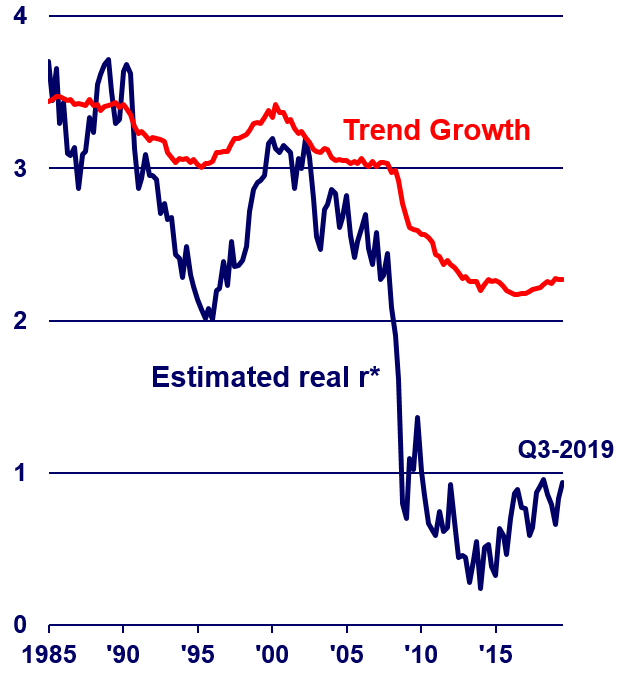
Advanced Economies (percent)
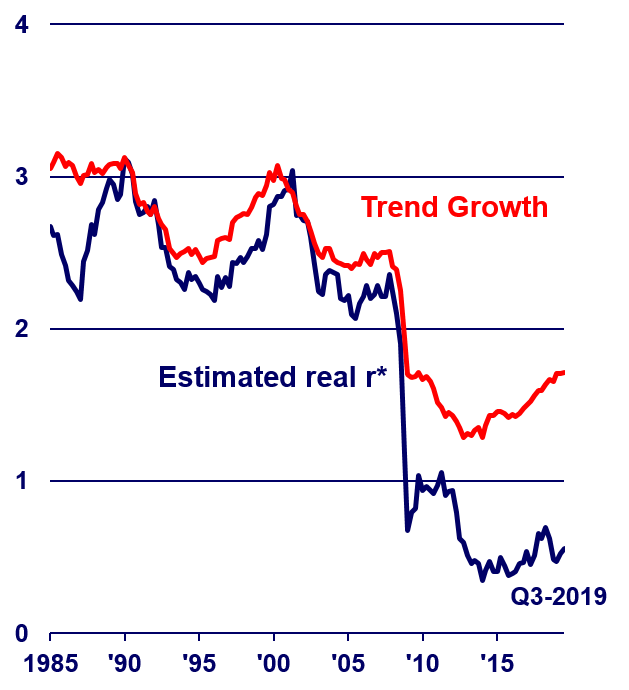
Undershooting Inflation Goals
Deviation from Central Bank Inflation Target
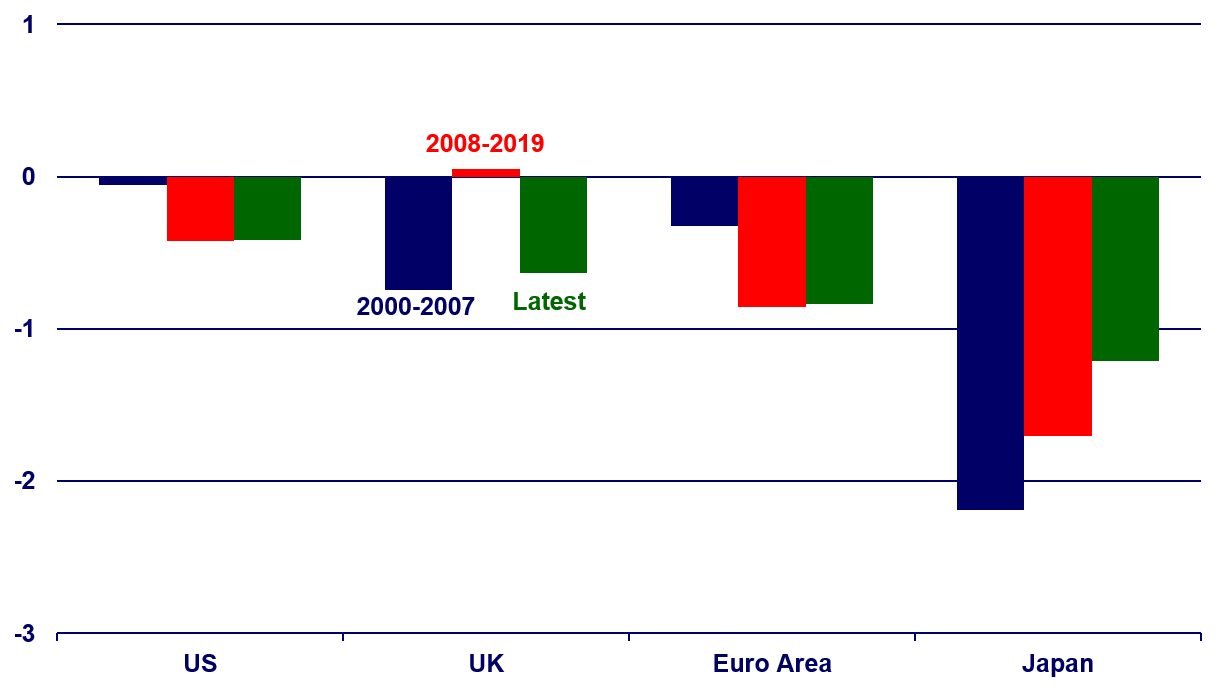
Conventional Monetary Policy Easing During Past Recessions
Federal Funds Rate (percent)
| Average easing during recessions | 500 bps |
| Current fed funds rate range | 150-175 bps |
| Long-run neutral rate | 250 bps |
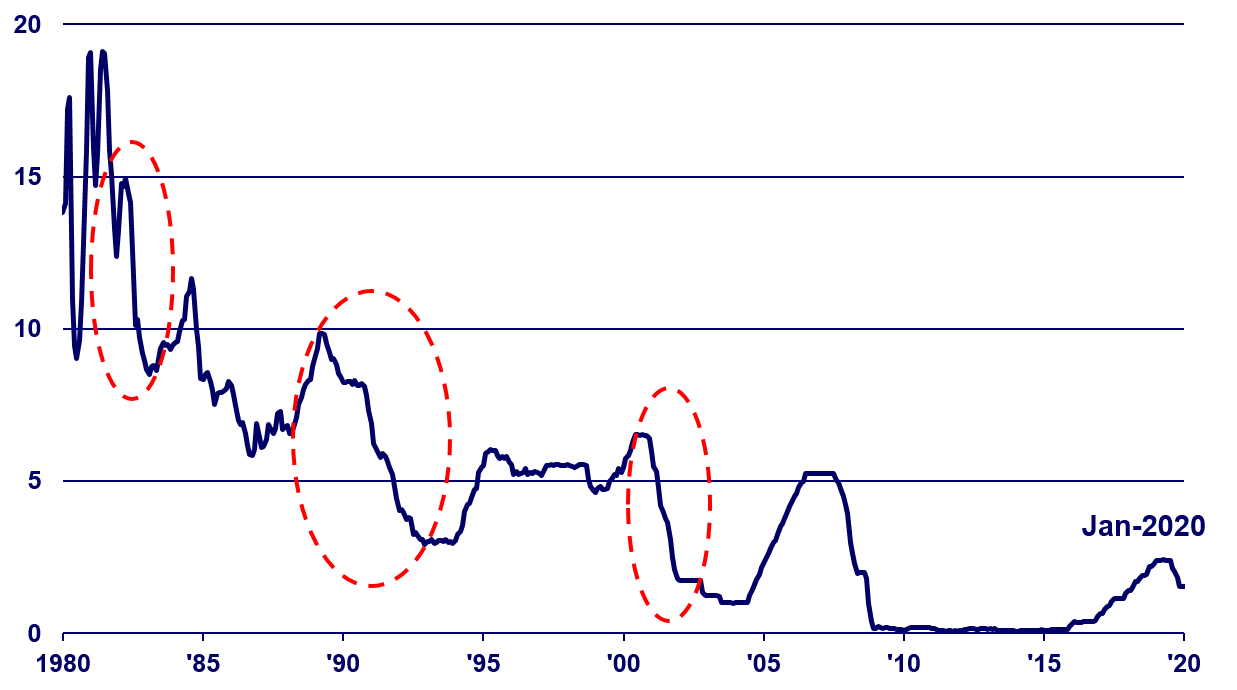
Fed Funds Rate and a Traditional Benchmark
Federal Funds Target Rate (percent)
Taylor Rule (1999):
r(t) = r*(t) + π(t) + 0.5[ π(t) – π* ] + 2[ uLR(t) – u(t) ]
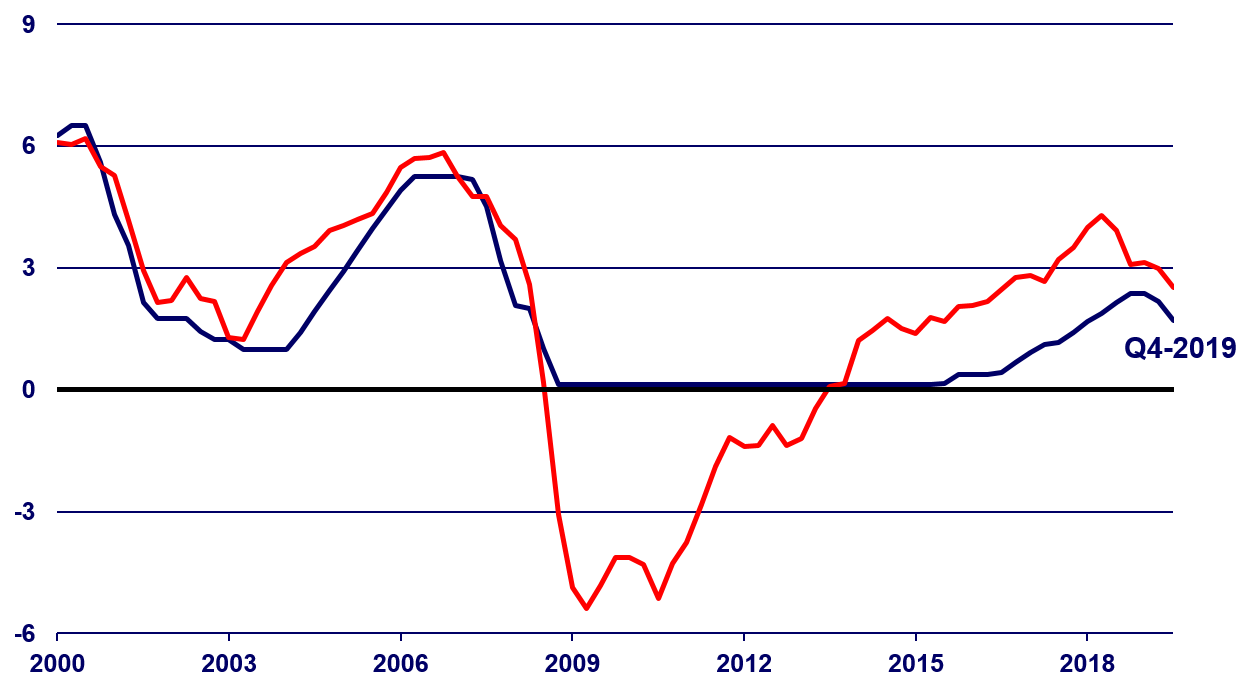
Source: Board of Governors of the Federal Reserve System from Haver Analytics
Offsetting ELB Downward Inflation Bias
- Heightened risk of ELB
- Downward bias in inflation
- Risk of E[π] < π*
- To offset bias, likely need π > π* for some period of time so that:
- E[π] is firmly anchored at π*
- π = π* in the medium term
- Embrace approaches aimed at these bias-adjusting outcomes
Outcome-Based Approaches
- Overarching aim: achieve dual mandate goals
- To do so, monetary policy must commit to:
- Provide extraordinary policy accommodation during and after ELB episodes
- Prescriptions from simple rules (e.g., Taylor) are inadequate
- Generate periods of π > π* to offset ELB downward inflation bias
- Recognize π > π* is required more than in non-ELB world
- Convey to public that periods of π > π* essential to achieve dual mandate over long haul
- The outcome of E[π] = π* is key
- Provide extraordinary policy accommodation during and after ELB episodes
- A number of ways to operationalize this
Example: State-Contingent Price Level Targeting
Core PCE Price Index
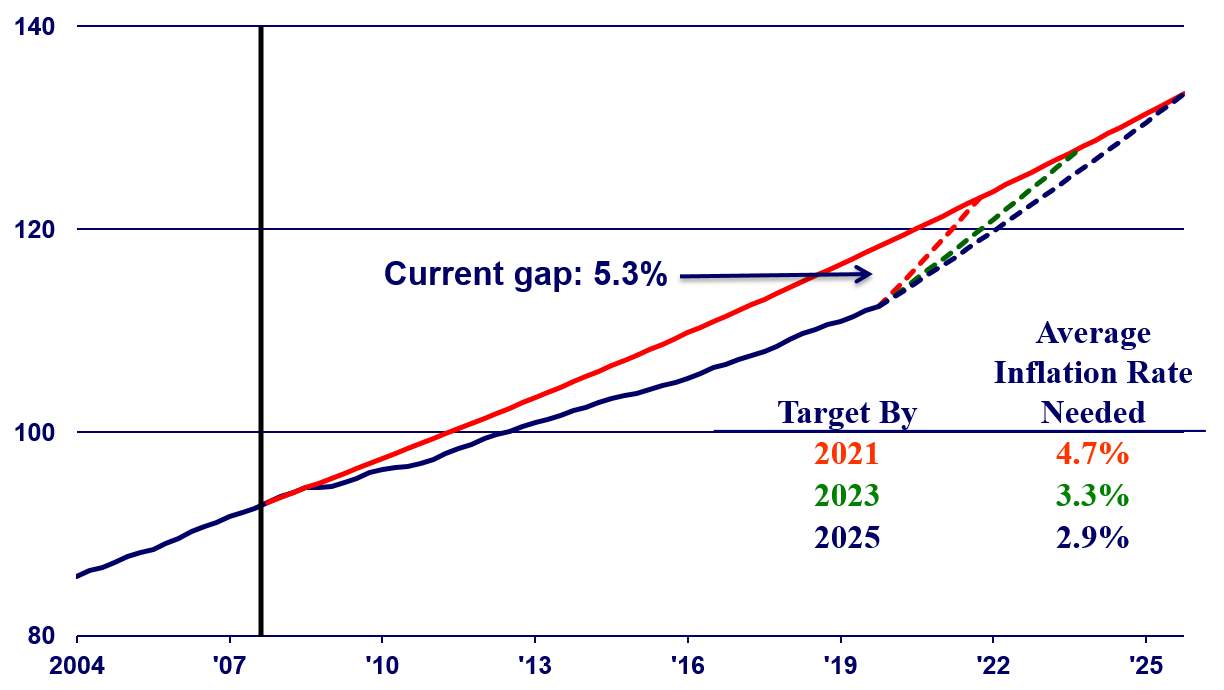
Example: Asymmetric Policy Response
- Respond more aggressively when inflation below target than when inflation above target: Bianchi, Melosi, Rottner (2020)
- Adjust the standard Taylor Rule
r(t) = r*(t) + π(t) + λ[ π(t) – π* ] + 2[ uLR(t) – u(t) ]
- If π(t) < π*, larger λ
- If π(t) > π*, smaller λ
Evans’s view: Inflation objectives that have a point target, such as 2 percent, are easier to communicate than objectives defined by an inflation range. As I discuss next, using a range requires even more attention to asymmetry.
Example: Inflation Ranges [πL < π* < πU ]
- Alternative #1: Harris (2016); Mertens and Williams (2019)
- Recognize that inflation will be driven to πL when at ELB
- Aim for higher inflation πU away from ELB to average π* over time.
- Alternative #2: Bianchi, Melosi, and Rottner (2020)
- When inflation is in range, react less aggressively
- But set range asymmetrically about target
- e.g., if π* = 2%, then πL = 1.5%, πU = 2.85%
Example: Inflation Ranges [πL < π* < πU ]
- Alternative #3: Symmetric Range of Policy Indifference
- When inflation is in range, do nothing. Say we can go home—that’s good enough for government work
Example: Inflation Ranges [πL < π* < πU ]
Rejected
- Alternative #3: Symmetric Range of Policy Indifference
- When inflation is in range, do nothing. Say we can go home—that’s good enough for government work
- Won’t cure ELB downward inflation bias
Properties of Asymmetric Responses and Range Alternatives #1 & #2
- Parameters can be set so that inflation will average π* over long periods of time
- Do not require mechanical makeup for past periods of inflation away from target
Some Questions
- Can policymakers credibly commit to pursuing the policies prescribed by some of these alternatives?
- How will central banks communicate these strategies effectively?
- How will the public react to protracted periods of π > π*?
- Will long-run inflation expectations move up? By how much?
- What are the financial stability implications of the highly accommodative policies prescribed by the alternatives?
My Key Considerations
- Focus on outcome-based strategies
- In the U.S., focus on the dual mandate
- When ELB drives down π < 2%, likely need follow with period of π > 2% to get inflation expectations consistent with target
- Given ELB, any operational framework will need to use unconventional tools (e.g., QE, forward guidance)
- Effectiveness of these policies will influence the policy parameters of the alternative frameworks
- Address potential financial stability risks with regulatory and supervisory tools
- Credibility is key and essential for any operational framework










